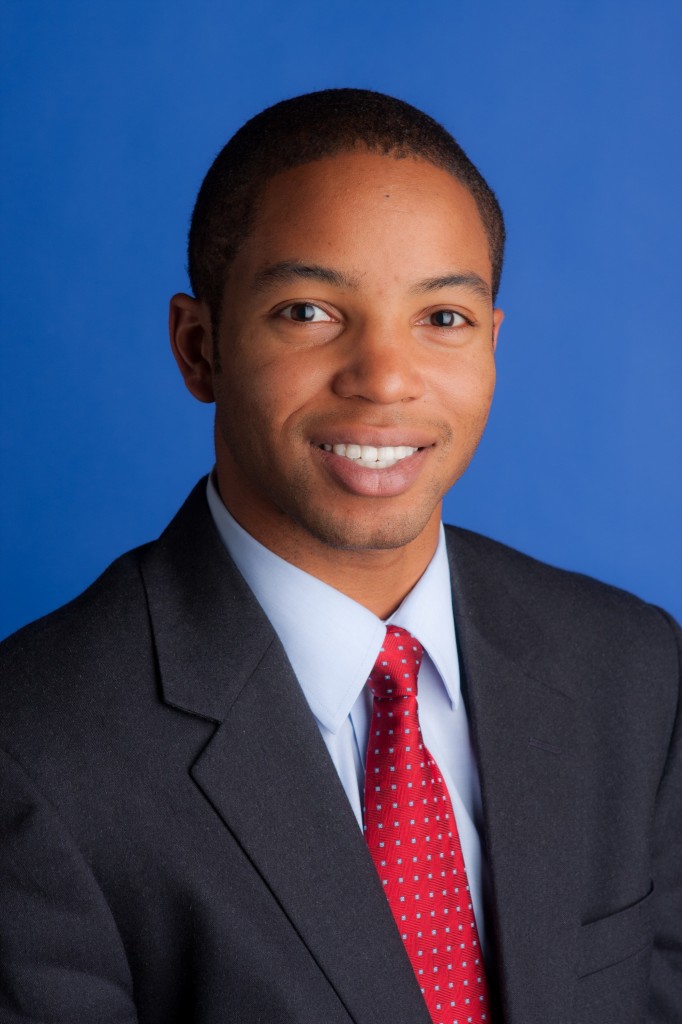
Austin Blackmon is excited to walk to work. A native of the Great Lakes region, Blackmon has seen his fair share of harsh winters, so strolling to City Hall will not pose any problems. The newly appointed chief of environment and energy also spent 11 years on the East Coast, from high school to Harvard to Harvard Business School, so he understands Mother Nature’s fickle nature. And that won’t stop him from taking even the smallest steps to help the environment.
“There’s always small things you can do based on your own situation,” Blackmon said, referring to how anyone can contribute to making Boston greener. “I plan on walking to work. It’s not something for everyone but people who want to do something small – even working with their thermostat, turning it up or down just one degree – can have a big impact.”
Blackmon currently spends his days working as interim head of project finance for Terraverde Renewable Partners in Northern California. In this capacity, he’s been able to foster his affinity for clean energy and the environment. He admits to catching the green bug years ago, however, while working as an associate for Booz Allen Hamilton.
At Booz Allen, Blackmon was charged with working on compliance with environmental policy and preservation. In essence, his task was helping certain aspects of the government reduce their carbon footprints.
Although this impactful experience wouldn’t have happened without a stint working as an intern in the nation’s capital.
“When I was growing up, I wanted a lot of the typical things kids want to be when they grow up – be a pilot, play in the NBA, etcetera,” Blackmon said. “I worked on Capitol Hill as an intern. The senator I worked for said there are a couple of places to look at to make an impact on the world, including energy.”
Blackmon credits the senator he interned for with helping him set a course for his career and garnering some much needed managerial experience. Though he never particularly saw himself working in government at any level, his former boss, an ambitious Chicago upstart named Barack Obama, helped him change his mind.
Right out of college, Blackmon had to put his growing leadership acumen to the test.
“I was 22-years old at the time and had the responsibility to manage a team of educators who were educators for almost as long as I had been on the earth,” he said. “This was a big management challenge I had right away.”
But this experience will more than come in handy in City Hall, where Blackmon is sure to encounter officials who have been playing the game just as long as the librarians, teachers and principals he once oversaw.
Blackmon personifies many of the themes of Mayor Walsh’s administration: youth, passion, civic-mindedness and a proactive nature, to name a few. He’s something of a political outsider, having been around but not directly involved in policymaking. These characteristics are crucial for what’s turning out to be a successful inaugural year for the Walsh administration. He’s made it a point to seek out people who want to make a positive impact on their community. Blackmon perfectly fits the mold.
People who want to do something small – even working with their thermostat, turning it up or down just one degree –can have a big impact
Perhaps nothing exemplifies how non-traditional Mayor Walsh’s tenure is better than Blackmon’s first meeting with him. Work was hardly one of the first topics they discussed.
“My first interaction with Mayor Walsh was great,” Blackmon said. “It was him asking all about my family at first. He’s a really great guy who comes across immediately as someone who cares about his employees and cares about Boston very passionately. He’s willing to give his employees the ability to come up with their own plans and latitude in terms of implementing them.”
In this respect, Blackmon plans on hitting the ground running. He’ll take up his post on January 19. In the meantime, he will strive to support the 2014 Climate Action Plan and the 2015 Open Space Plan. These two strategies will help city developments and public spaces adapt to rising sea levels and climate change. Both plans underwent a period of public review, and Blackmon sees them as invaluable for Boston to continue reducing its greenhouse gas emissions.
As for novel ideas, he has a pilot program or two in mind. One pertains to measuring and evaluating the opportunities to capitalize on solar power, while another will look into using alternative fuels for the city’s fleet. Energy audits, too, are likely to be conducted.
He also recognizes, though, that it’s the little things during the day-to-day that make a difference and anyone can take part. Bostonians are privy to Greenovate Boston, a community-driven initiative to reduce municipal greenhouse gases up to 80 percent by 2050. Commuters can opt for public transit or an alternative mode like cycling instead of spewing exhaust from their cars while sitting in traffic.
Or, like Blackmon, they can brave the imminent snow and walk to work.
“I’ve grown up in places where I’ve dealt with quite a bit of snow,” he said. “It’ll be an adjustment having been out here in San Francisco, but I’m absolutely looking forward to walking to work.”

